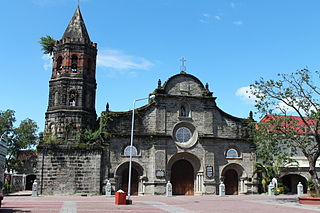
Bulacan, officially the Province of Bulacan, is a province in the Philippines located in the Central Luzon region. Its capital is the city of Malolos. Bulacan was established on August 15, 1578, and part of the Metro Luzon Urban Beltway Super Region.

Valenzuela, officially the City of Valenzuela, is a 1st class highly urbanized city in the National Capital Region of the Philippines. According to the 2020 census, it has a population of 714,978 people.

Intramuros is the 0.67-square-kilometer (0.26 sq mi) historic walled area within the city of Manila, the capital of the Philippines. It is administered by the Intramuros Administration with the help of the city government of Manila.

Malolos, officially the City of Malolos, is a 3rd class component city and capital of the province of Bulacan, Philippines. According to the 2020 census, it has a population of 261,189 people.
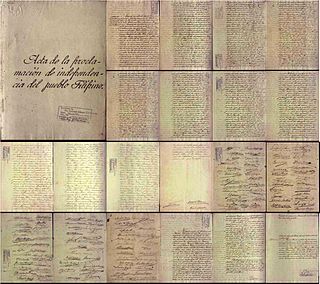
The Philippine Declaration of Independence was proclaimed by Filipino revolutionary forces general Emilio Aguinaldo on 12 June 1898 in Cavite el Viejo, Philippines. It asserted the sovereignty and independence of the Philippine Islands from the colonial rule of Spain.

Baliuag, officially the Municipality of Baliuag and alternatively spelled Baliwag, is a 1st class municipality in the province of Bulacan, Philippines. According to the 2020 census, it has a population of 168,470 people.

The Baroque Churches of the Philippines are a collection of four Spanish Colonial-era baroque churches in the Philippines, which were included in UNESCO's World Heritage List in 1993. The churches are also considered as national cultural treasures of the country.

Barásoain Church is a Roman Catholic church built in 1888 in Malolos, Bulacan. It is about 42 kilometers away from Manila. Having earned the title as the "Cradle of Democracy in the East, the most important religious building in the Philippines", and the site of the First Philippine Republic, the church is proverbial for its historical importance among Filipinos.

The architecture of the Philippines reflects the historical and cultural traditions in the country. Most prominent historic structures in the archipelago are influenced by Austronesian, Chinese, Spanish, and American architectures.
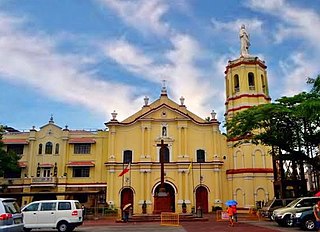
The Roman Catholic Diocese of Malolos is a Roman Rite Diocese of the Latin Church of the Catholic Church in the Philippine, encompassing the whole Province of Bulacan and Valenzuela City in Metropolitan Manila and is a suffragan to the Archdiocese of Manila. The mother church of the Diocese is the Cathedral-Basilica of the Immaculate Conception located in Malolos City, Bulacan. The Blessed Virgin Mary, under the title of Immaculate Conception is the principal patroness of the diocese.
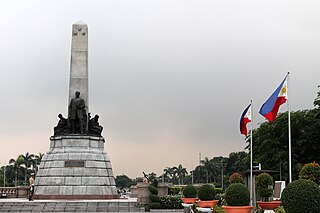
The Philippine Registry of Cultural Property, abbreviated as PRECUP is a national registry of the Philippine Government used to consolidate in one record all cultural property that are deemed important to the cultural heritage, tangible and intangible, of the Philippines. On June 11, 2018, the entries in the newly updated PRECUP was at 3,921. Additionally, 1,259 out of 1,715 LGUs, or 73 percent of LGUs have established local cultural inventories (LCI).

Ancestral houses of the Philippines or Heritage Houses are homes owned and preserved by the same family for several generations as part of the Filipino family culture. It corresponds to long tradition by Filipino people of venerating Ancestors and Elders. Houses could be a simple house to a mansion. The most common ones are the "Bahay na Bato". Some houses of prominent families had become points of interest or museums in their community because of its cultural, architectural or historical significance. These houses that are deemed of significant importance to the Filipino culture are declared Heritage House by the National Historical Commission of the Philippines (NHCP), previously known as the National Historical Institute (NHI) of the Philippines. Preservation is of utmost importance as some ancestral houses have come into danger due to business people who buy old houses in the provinces, dismantle them then sell the parts as ancestral building materials for homeowners wishing to have the ancestral ambiance on their houses. These ancestral houses provide the current generation a look back of the country's colonial past through these old houses.

The National Cultural Heritage Act, officially designated as Republic Act No. 10066, is a Philippine law that created the Philippine Registry of Cultural Property (PRECUP) and took other steps to preserve historic buildings that are over 50 years old. It was signed into law on March 25, 2009.
Pariáns were districts of cities in the Philippines during the country's Spanish colonial era where Chinese (Sangley) were required to live by Spanish colonial authorities. In Luzon there are several towns and cities with districts for chinese settlers, the most famous being the parian of Manila which moved locations within the city from time to time, before finally settling on Binondo Chinatown, another is in the neighborhood of El Pariancillo in Vigan and Pariancillo in Malolos which was established in 1755 as a Chinese enclave of Malolos that were from migrants from Manila. There are also many other Pariáns throughout Luzon, such as Parian, Mexico, Pampanga that became the municipality's poblacion and Parian in Calamba, Laguna, and etc. In the Visayas, Cebu City had Pari-an, which is now a modern-day barangay in the city, and Iloilo City also had parians, which was located in the modern-day district of Molo. Cebu's parian was founded in 1590 after the arrival of Chinese traders and was supervised by the Jesuits. There were many more Pariáns throughout the Philippines during the Spanish Colonial Era.
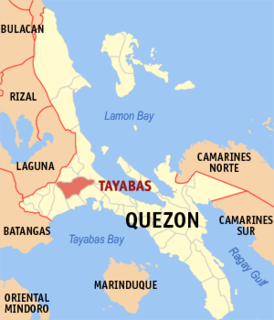
The Spanish colonial bridges in Tayabas are bridges built during the Spanish-colonial era in Tayabas, Quezon. The city government of Tayabas declared eleven bridges in the city as Historical bridges of Tayabas for protection purposes. These are the bridges of Alitao, Isabel II, Urbiztondo, Don Francisco de Asis, Bai, Despedidas, Ese, Princesa, Malagonlong, Lakawan and Mate. In 2011, ten bridges in Tayabas was declared as National Cultural Treasure under the Historic Bridges of Tayabas. The declared national cultural treasures under the list are the bridges of Alitao, Isabel II, Don Francisco de Asis, Gibanga, Malagonlong, Lakawan, Mate, Ese, Despedida, Tumuloy and Princesa.

The Pila Historic Town Center is a historic district located at Barangay Santa Clara Norte, Pila, Laguna, Philippines. The district preserves examples of Spanish and American-era architecture found in its town proper laid out with the Spanish colonial town planning system for the Indies and is also a pre-Hispanic archaeological site. The National Historical Institute declared a specific portion of Pila as a National Historical Landmark in 2000.

The Dapitan Heritage Zone or Dapitan Historic Center is a declared historic district in Dapitan City, Zamboanga del Norte, Philippines. Because of its prehistoric origins, collection of heritage structures and role in the exile of local patriot Dr. Jose Rizal, the National Historical Commission of the Philippines declared a specific portion of the city, along with its heritage structures, as a Heritage Zone or Historic Center in 2011. The declaration was made in coordination with the 150th birth anniversary of Dr. Rizal in June 2011.
Alberta Uitangcoy-Santos was the leader of The Women of Malolos, and is revered for her contributions to Philippine women's rights, the fight for Philippine independence, and a large part of the traditional cuisine of the city of Malolos, Bulacan, in the Philippines during the Spanish and American colonial periods. She is known as the matriarch of the Uitangcoy-Santos House, which has been declared a national heritage house by the National Historical Commission of the Philippines, and currently houses the Museum of the Women of Malolos which is now curated by her fifth-generation grandson, Carlo Herrera.

Mga kababayang dalaga ng Malolos, also known by its alternative English title To the young women of Malolos, is a letter written by Filipino author and political reformer José Rizal on February 22, 1889. It is written in Tagalog and is addressed to a group of women from Malolos, Bulacan who successfully lobbied the Spanish colonial government to allow them to open a school so that they could study the Spanish language.
Philippines National Historic Landmarks is a registry of historic sites in the Philippines that have been officially declared by the Philippine Registry of Cultural Property.























































